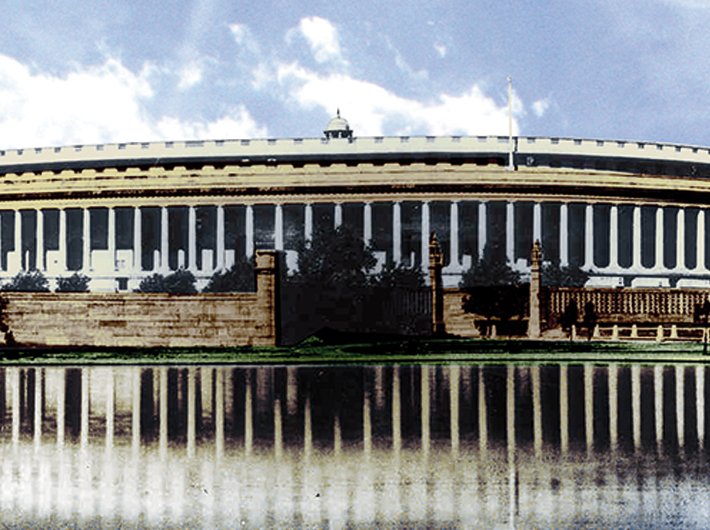Education and employment are the two critical factors that influence the youth perception towards the political system and governance of the country.
India is the largest democracy and the second largest populated country in the world. One-third of its population belongs to the youth in the age group of 15-29. Youth is a transition period between the childhood and adulthood. United Nations defines youth as persons within the age group of 15-24. The National Youth Policy (NYP) 2014 of India considers the 15-29 age group as a youth in the various policy intervention programmes. The vision of the NYP 2014 is “to empower the youth of the country to achieve their full potential, and through them enable India to find its rightful place in the community of nations”.
To translate this vision into action, the states have to enact youth policies immediately to fulfill the objectives set forth by the national youth policy. The states can enact youth policies on the basis of the framework provided by the NYP keeping in view of the local state conditions and youth demography. However, until now out of 29 states, 14 states have enacted the youth policies, four states are in the formative stages of youth policy and the remaining 11 states have yet to initiate the process to enact youth policies in their states.
The country is experiencing various conflicts, including extremism in the regions such as Jammu and Kashmir, northeastern States, as well as central and eastern states. There is an urgent need for the youth policies in these states to contain the growing unrest among the youth while taking into consideration the state specific factors. Education and employment are the two critical factors that influence the youth perception towards the political system and governance of the country. “At present, about 34% of India’s Gross National Income (GNI) is contributed by the youth, aged 15-29 years”. This indicates that, India has done a fairly good job in engaging its youth in creating the economic wealth of the country.
India is yet to create the opportunities for the youth to involve them actively in governing the country. The question is what are the various institutional arrangements available for the youth to engage in governing? How far are the states in India showing interest in making youth active partners of governance? One of the factors behind the electoral success of the Bharatiya Janata Party in Lok Sabha of 2014 is the youth who voted for the first time. However, even after seven decades of Independence, our political view has not changed much with regard to youth participation in politics and governance.
To illustrate, the Inter-Parliamentary Union (IPU) 2016 reveals interesting facts about the youth involvement in the law and decision-making process. It has observed that “almost one-third of all single and lower houses and more than 80 percent of upper houses have no members aged under 30 and the proportion of young MPs is lowest among under-30s at 1.9 percent”. India stands at 46th position with 2.2 percent of parliamentarians in the Lok Sabha out of 126 countries. Although it is better than the global average, but it lags behind the countries such as Bhutan (5.6 %), Chile (5.8%), Cuba (5.9%) and Somalia (5.2%).
The sixteenth Lok Sabha has 71 MPs in the age group of 25-40 constituting 13 percent of the MPs of the country which is less than the fifteenth Lok Sabha (78 MPs). Only two MPs come under the age group of 30 which means only 0.36 percent for the 30 percent of the population in the country. Given our peculiar socio-economic and political heritage, it is understood that the youth are most under-represented in the parliament, even in the age group of 25-40. BJP has more number of MPs aged between 25-40 than the Congress in the current Lok Sabha. It is high time now to create the necessary conditions and opportunities for the youth in the political parties and governance of the country.
This can be done in the following ways: (i) Creating a reservation or quota system within the political parties (Sweden, Senegal and Croatia) (ii) Aligning the minimum age of MP with that of voting age in order to reduce waiting time to get elected to parliament (iii) Reserving seats for the young people in the parliament as done by the countries such as Rwanda, Morocco and Kenya (iv) Legislating youth inclusion in the parliament, for example in Philippines, Sri Lanka and Tunisia and (v) Encouraging youth participation in local governance through Panchayats and Municipalities. To illustrate, 6 percent of the youth contested in the Bengaluru Municipal Corporation elections of 2015. There is a need to increase this number with appropriate knowledge and skills of politics and governance.
The potential dangers of various socio-political conflicts in India across various regions has undercurrents in the alienation of youth issues in public policy making especially ineffective participation in the politics of the country. India as a young nation in the world has to take the lead in this regard by investing in youth education and skill development and political inclusion. This has wider ramifications not only to reduce the tendencies of violent extremism among the youth, but also in enhancing the trust of the elected governments through the deepening of democracy. We as a nation celebrated the 155th birth anniversary of Swami Vivekananda who had immense faith in the younger generation. This is high time for us to give more thrust to youth concerns, needs and aspirations by electing more youth into the parliament, legislative assemblies and local government institutions. In case if we are unable to do this, then we may witness demographic-disaster rather than reaping the full potentials of demographic-dividend.
(Veeresha is PhD fellow, Centre for Political Institutions, Governance and Development, Institute for Social and Economic Change, Bengaluru)
